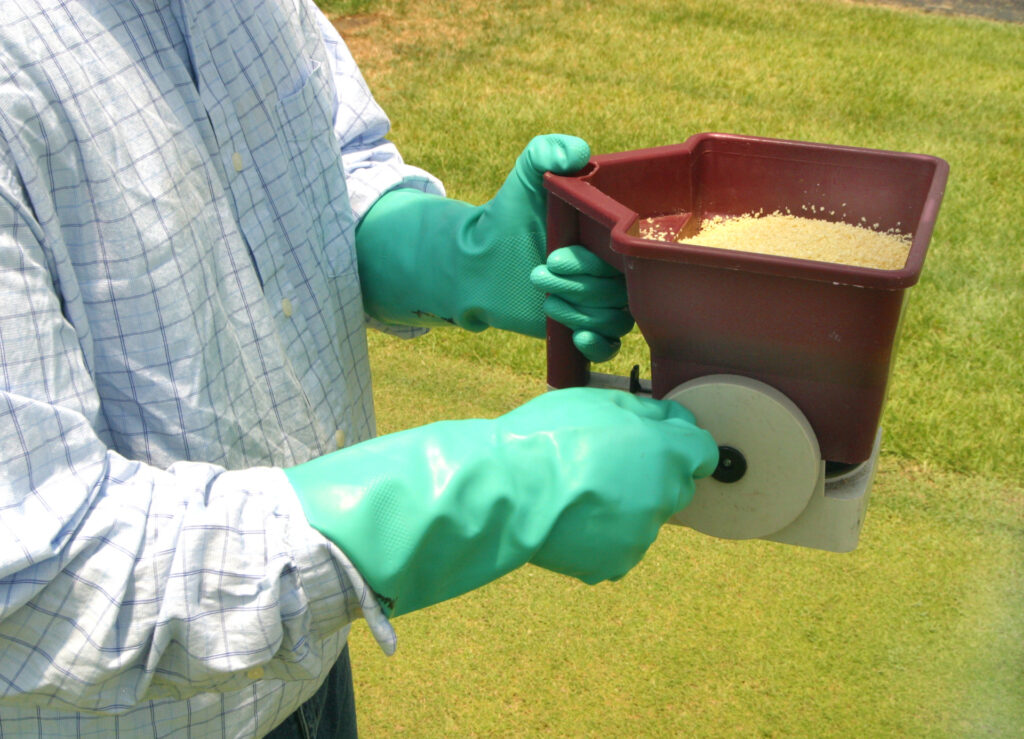- La Feria Community Holds Succesful Business Mixer Event
- Little Nashville to Take Place in Downtown Mercedes
- Lions Basketball Captures District Gold
- La Feria ISD Students Compete in Regional Chess Tournament
- Lions End First Half of 32-4A on a High Note
- La Feria ISD Held Another Successful Parent Conference
- Strong Appearance for Lions at Hidalgo Power Meet
- LFECHS Students Get to Meet Local Actress
- Students Participate in Marine Biology Camp
- Two LFECHS Students Qualify for All-State Band
Spring Is The Time For Texans To ‘Two-Step’ Toward Fire Ant Control
- Updated: April 6, 2024
AgriLife Extension method is a safe, effective way to manage imported red fire ants

Spring is an ideal time to take the first step to fire ant control, said a Texas A&M AgriLife Extension Service expert.
“This is the time of year when ants begin foraging for food and when spring rains percolate through the soil and destroy underground fire ant tunnels,” said Robert Puckett, Ph.D. AgriLife Extension entomologist in Texas A&M’s Department of Entomology, Bryan-College Station. “This causes them to deposit new tunnel soil as a mound on the surface above, making them much easier to locate.”
Puckett said the Two-Step Method is AgriLife Extension’s preferred means of fire ant control.
About the Two-Step method
The Two-Step Method is less labor-intensive, less toxic and more environmentally friendly than most other means of do-it-yourself fire ant control. It can be an efficient, effective and safe way to control fire ants for an individual home, large property or entire community.
The first step involves semi-annual broadcast applications of fire ant bait. The second involves follow-up treatments of individual mounds or “nuisance” ant colonies, such as those in sensitive or high-traffic areas.
— Step one: The use of fire ant bait as the first step is effective as temperatures begin to rise and ants begin to gather forage to feed their new brood.
“Spring and fall are particularly good times to apply baits,” Puckett said. “Once it gets hot and dry, as in the summer months, fire ants become less active, and mounds become less visible as ants go deeper into the soil.”
Broadcasting bait across a property is also advantageous in that users don’t have to find the fire ant colonies, he said.
“Fire ant colonies can be difficult to locate, especially over a large area, so using a bait is less costly in terms of time and the amount of product needed for treating larger areas,” Puckett said. “Ants pick up the bait and return it to the nest, so they do most of the work for you.”
He said the fire ant bait concentration is very low compared to residential insecticides.
“The recommended amount of grains per area is fairly low, so it’s not necessary to use a lot of insecticide,” he said. “While the efficacy of baits may differ, they all work pretty well.”
The baits that work faster are also usually more expensive, so Puckett said homeowners should determine if the cost is worth the result.
— Step two: Because fire ant mounds are most visible this time of year, especially after a rain, they are easier to locate to do the second step. This involves treating the largest or most troublesome mounds with an individual mound treatment, such as a liquid drench or some form of granular, non-bait insecticide or dust.
“Most contact insecticides applied directly to the mound kill the colony in one-to-two days,” Puckett said. “If the area has just a few mounds, then it may not even be necessary to apply bait as a first step.”
He said it is extremely important to follow label instructions and not mix too little or too much water if using a liquid insecticide.
“Aside from the label being the law, these products have been tested for efficacy and safety at a particular concentration, so you don’t want to guess at what may or may not happen if you vary from instructions,” he said.
Wearing proper protection such as gloves and possibly even safety goggles is key if you’re mixing chemicals. Puckett said to always be mindful of protecting yourself and the environment.
Proper use of fire ant control products
Puckett said one of the reasons AgriLife Extension developed the Two-Step Method was to help consumers make sense of all the fire ant control products on the market.
The insecticide label determines where a product can be used, whether it’s a lawn, garden, agricultural production pasture or orchard. Users should always read the pesticide label to be sure the site they are treating is listed, then follow all label instructions.
Puckett provided the following suggestions related to fire ant control:
Do not use gasoline or other petroleum products to control fire ants. Although these kill fire ants, they are highly flammable and are dangerous to both the user and the environment.
Don’t leave insecticide granules on streets or sidewalks after application. Sweep up any excess product so it doesn’t wash into gutters or storm sewers and affect the water table.
Always follow label directions on the proper disposal of pesticides. Do not pour pesticide leftovers down the drain as they are not easily removed by regular wastewater treatment.





